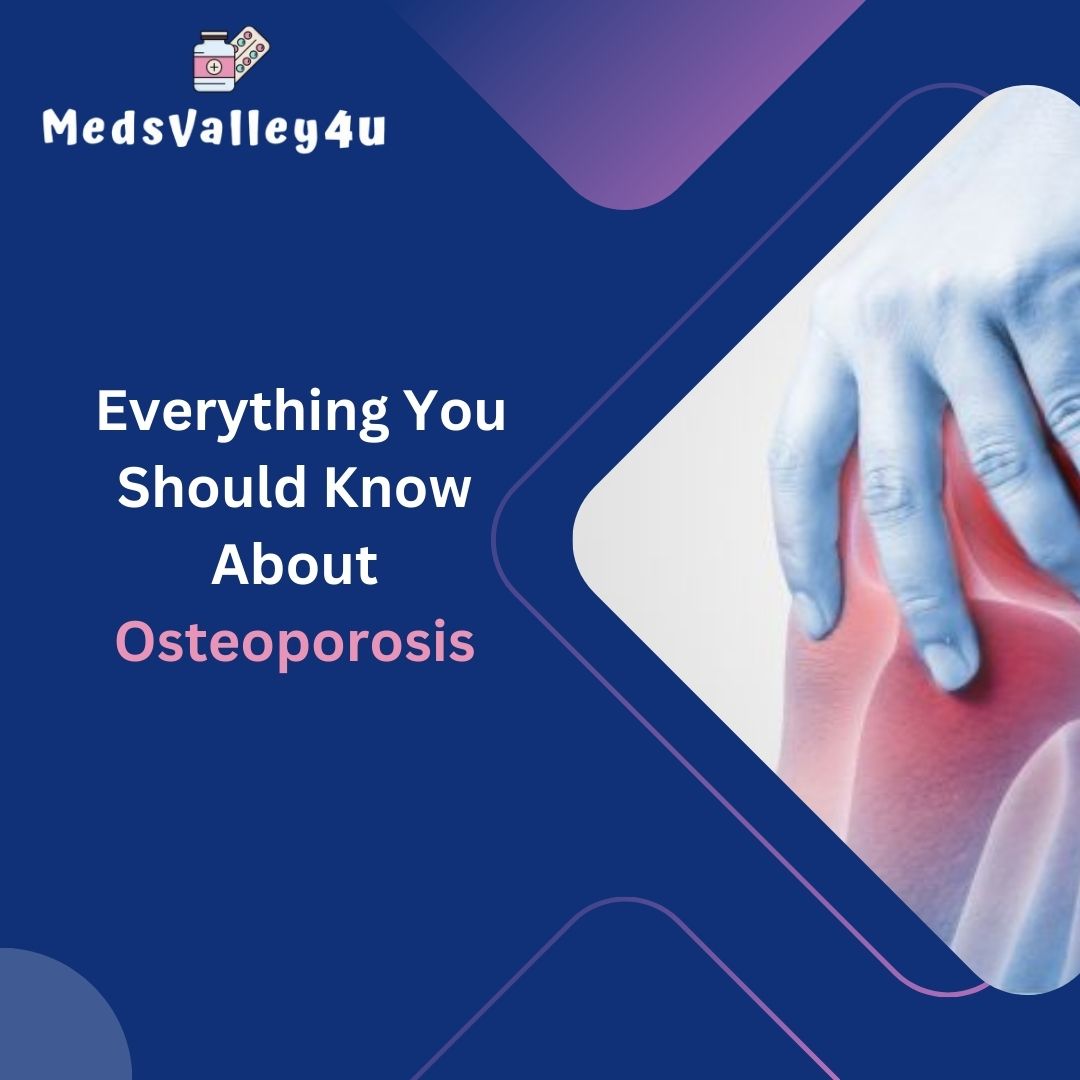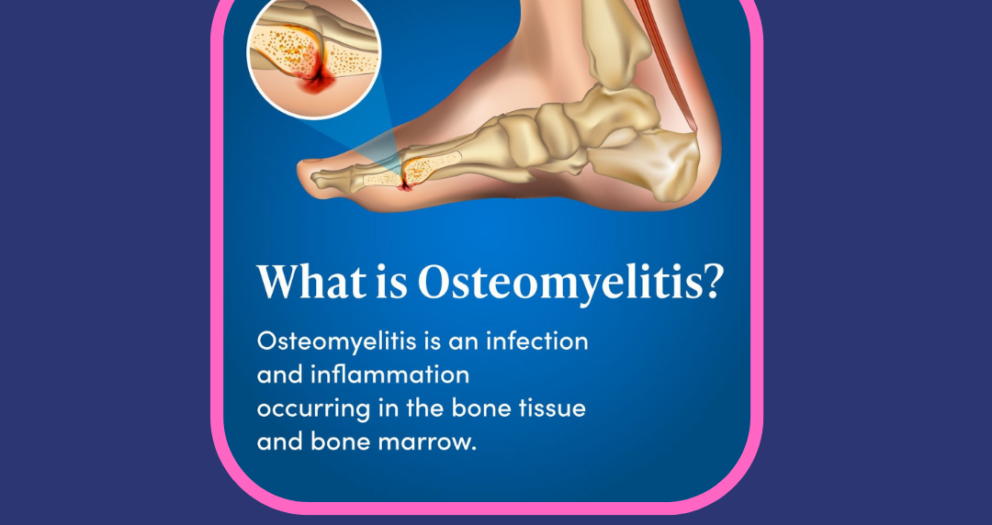About Osteoporosis
Osteoporosis is a common condition that affects millions of people worldwide, particularly older adults and postmenopausal women. It is characterized by weakened bones, which become fragile and more susceptible to fractures. Understanding osteoporosis, its risk factors, symptoms, prevention, and treatment options is essential for maintaining bone health and preventing complications. This blog will provide a comprehensive overview of osteoporosis, covering everything you should know about this silent yet potentially debilitating condition.
1. What is Osteoporosis?
Osteoporosis, meaning “porous bone,” is a condition in which bones lose their density and strength, becoming fragile and more prone to fractures. Bones are living tissues that are constantly being broken down and rebuilt. This process, known as bone remodeling, involves osteoclasts (cells that break down bone) and osteoblasts (cells that build bone). In osteoporosis, the rate of bone loss outpaces the rate of bone formation, leading to a decrease in bone density.
As a result, bones become porous and brittle, making them more likely to break from minor falls or even simple actions like bending or coughing. The most common sites of fractures due to osteoporosis are the hip, spine, and wrist, which can lead to significant pain, disability, and a decrease in quality of life.
2. Causes and Risk Factors
Several factors contribute to the development of osteoporosis. While some risk factors are beyond control, others can be managed through lifestyle changes and medical intervention.
- Age: Bone density naturally decreases with age, making older adults more susceptible to osteoporosis.
- Gender: Women are at a higher risk than men, especially after menopause, due to the decline in estrogen levels, which plays a crucial role in maintaining bone density.
- Family History: A family history of osteoporosis or fractures can increase your risk of developing the condition.
- Body Size: Small, thin individuals have a higher risk because they have less bone mass to lose.
- Hormonal Changes: Conditions that affect hormone levels, such as low testosterone in men or overactive thyroid, can increase the risk.
- Dietary Factors: A diet low in calcium and vitamin D can lead to weakened bones. Excessive alcohol consumption and caffeine intake can also negatively impact bone health.
- Sedentary Lifestyle: Lack of physical activity, especially weight-bearing exercises, can contribute to bone loss.
- Smoking: Smoking has been linked to decreased bone density and increased fracture risk.
- Medications: Long-term use of certain medications, such as corticosteroids, can affect bone health and increase the risk of osteoporosis.
3. Symptoms of Osteoporosis
Osteoporosis is often called a “silent disease” because it progresses without any symptoms until a fracture occurs. However, there are subtle signs that may indicate weakened bones:
- Back Pain: Caused by a fractured or collapsed vertebra.
- Loss of Height: Over time, fractures in the spine can cause a person to lose height.
- Stooped Posture: Known as kyphosis, this condition results from fractures in the spinal vertebrae leading to a hunched back.
- Bone Fractures: Fractures can occur more easily than expected, such as from a minor fall or bump.
Since osteoporosis often remains undetected until a fracture occurs, it is important to be aware of risk factors and take steps to monitor bone health, especially if you are at higher risk.
4. Diagnosis of Osteoporosis
Osteoporosis can be diagnosed through a variety of methods:
- Bone Density Test (DEXA Scan): The most common test is a dual-energy X-ray absorptiometry (DEXA) scan, which measures bone mineral density (BMD) at the hip and spine. The results are given as a T-score, which compares your bone density to that of a healthy young adult. A T-score of -2.5 or lower indicates osteoporosis.
- Bone Markers: Blood and urine tests can measure specific markers of bone turnover, helping to assess the rate of bone loss.
- X-rays: While not used for early diagnosis, X-rays can reveal fractures or bone loss in advanced cases of osteoporosis.
Early detection through regular screenings is key, especially for those at high risk, as it allows for timely intervention to prevent fractures.
5. Prevention of Osteoporosis
Prevention of osteoporosis focuses on building and maintaining strong bones throughout life. Here are some strategies to help prevent osteoporosis:
- Adequate Calcium Intake: Calcium is essential for bone health. Adults should aim for 1,000-1,200 mg of calcium per day through dietary sources like dairy products, leafy greens, and fortified foods, or supplements if necessary.
- Vitamin D: Vitamin D helps the body absorb calcium. Sun exposure, fortified foods, and supplements can help maintain adequate vitamin D levels.
- Regular Exercise: Weight-bearing exercises, such as walking, running, and resistance training, stimulate bone formation and help maintain bone density.
- Healthy Lifestyle Choices: Avoid smoking, limit alcohol consumption, and reduce caffeine intake to support bone health.
- Balanced Diet: A diet rich in fruits, vegetables, lean protein, and whole grains provides essential nutrients that support bone health.
- Hormone Replacement Therapy (HRT): For postmenopausal women, HRT can help maintain bone density, although it comes with potential risks and should be considered carefully by a healthcare provider.
By adopting these preventive measures early in life, individuals can build stronger bones and reduce the risk of osteoporosis later on.
6. Treatment Options for Osteoporosis
While osteoporosis cannot be completely cured, several treatment options can help manage the condition and reduce the risk of fractures:
- Medications:
- Bisphosphonates: These are the most commonly prescribed medications for osteoporosis. They work by slowing bone loss and include drugs like alendronate (Fosamax), risedronate (Actonel), and ibandronate (Boniva).
- Selective Estrogen Receptor Modulators (SERMs): These drugs mimic estrogen’s positive effects on bone density in postmenopausal women.
- Hormone Therapy: Hormone replacement therapy can help maintain bone density, but it carries risks, including an increased risk of certain cancers and cardiovascular issues.
- Parathyroid Hormone Analogues: These drugs, such as teriparatide (Forteo), stimulate new bone growth and are used for severe osteoporosis.
- Monoclonal Antibodies: Denosumab (Prolia) is an injectable medication that helps reduce bone loss.
- Lifestyle Modifications: Maintaining a healthy diet, regular exercise, and fall prevention strategies are critical components of managing osteoporosis.
- Physical Therapy: Strengthening exercises, balance training, and posture improvement can help reduce the risk of falls and fractures.
7. Living with Osteoporosis
Living with osteoporosis involves managing the condition to maintain quality of life and prevent fractures. Here are some tips for living well with osteoporosis:
- Fall Prevention: Making the home safer by removing tripping hazards, using non-slip mats, and installing grab bars can help prevent falls.
- Regular Check-ups: Regular monitoring of bone density and overall health can help track the progression of osteoporosis and adjust treatments as needed.
- Healthy Diet: Continue focusing on a diet rich in calcium, vitamin D, and other nutrients that support bone health.
- Support Groups: Connecting with others who have osteoporosis can provide emotional support, shared experiences, and practical advice.
Similar Articles:-
Which Medicines Are Effective for Treating Erectile Dysfunction?
The Primary Six Causes Of Male Erectile Dysfunction
What Women Feel And Think About Sexual Desire?
Is Erectile Dysfunction Associated With Heart And Blood Vessel Disease?
The Top 10 Male Advantages Of Almonds And Walnuts
Are Pineapples Safe For Diabetes Patients to Eat?
What Are the Effects of Tadalafil on Kidneys?
Can Having Sex After a Heart Attack Be Harmful?
Fenugreek: Does It Help In Libido? Studying its Value
Conclusion
Osteoporosis is a serious condition that can significantly impact quality of life, but with early detection, preventive measures, and appropriate treatment, the risk of fractures can be minimized. Understanding the causes, symptoms, and treatment options for osteoporosis is essential for maintaining bone health throughout life. By taking proactive steps, individuals can manage osteoporosis effectively and continue to lead active, healthy lives.






Write a comment
Your email address will not be published. All fields are required